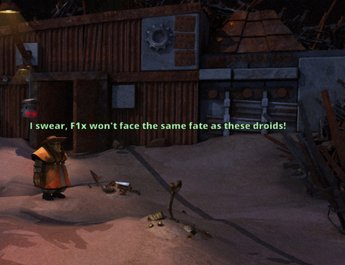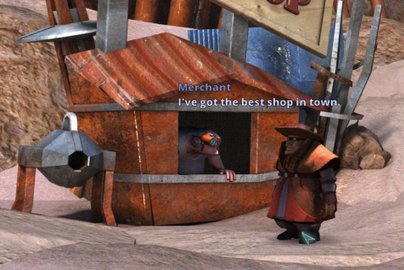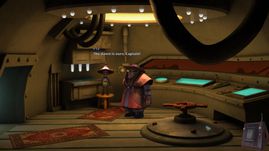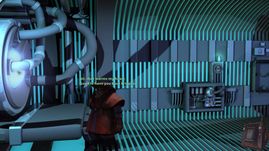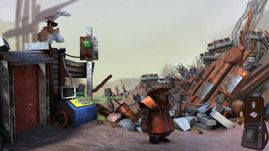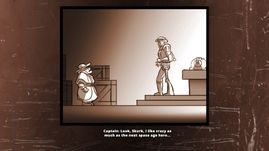Hunk of Junk
In the Point 'n Click adventure, Hunk of Junk, the Captain of The Princess is forced to crash-land on a foreign junk planet together with her trusty mechanic, F1x.
As F1x works on repairing the ship, the Captain boldly goes to find parts for a new Power Core, encountering a bunch of interesting characters along the way. This includes a crazy Hermit, the helpful mayor and a shopkeeper who sells dynamite.
Specification:
- School project: 8 weeks(50%)
- Level editor: XML-scripting
- Engine: In-house
- Team size: 9
- 2 Level Designers
- 3 Artists
- 4 Programmers
My contributions:
- Level design
- Game design
- Writing text descriptions
- Mission design
- TRUM-master
- Sound design
- Bug finding
Tools:
- Sublime Text for XML-scripting
- Adobe Photoshop
The gameplay
The point 'n click adventure Hunk of Junk is a light-hearted puzzle game with gameplay that focuses on finding the right objects, often combining two or more together to further progress the story. The game is divided into multiple areas that can be accessed in different order but all have to be completed for the player to access the last area of the game.
In each area a part of a power core can be collected that are later combined into a new power core for the Captains ship, The Princess. To give a sense of time passing by, the first part of the game takes place during day time. The transition into the later part of the game takes place during dusk and during the final part of the game it is night time.
When moving the cursor over an interactable object, the cursor is highlighted and should the player right-click while hovering over an object, three options are presented to him.
The first one being an eye, which when clicked makes Captain give the player a brief description of the object.
Secondly there is a speech bubble that will prompt Captain to talk to the object or perhaps person in this case.
Lastly there is a hand-icon, representing the option to pick something up and put it in the backpack.
Picking up something from the backpack and dropping it on another object will attempt to combine them into a new object that can be used to solve puzzles.
Design and pipeline
When starting up the project we had a group meeting during which one of the members pitched an idea for the theme and setting of the game.
Everyone was onboard with the suggestion and using these new ideas me and my level design colleague booked a room to have a meeting about the level design.
We started out by deciding how the different parts of the game would be connected to each other and wrote down any ideas for what type of setting any particular room would have.
Knowing how many rooms and areas we were going to have we could then start assigning the themes to the different areas.
To create a room I communicated the idea of the room to both graphical artists who had to draw the room aswell as programmers who built the functionality so I could create the room.
I then made a placeholder version of how the room should look and sent it the artists way with any important gameplay elements clearly visible.
The last step was to put all the objects and exits into the room via XML-scripting that the programmers created for us level designers to use.
It was a very tedious process and testing took a lot of time but it was worth it as it turned out very nice in the end.
Screenshots

